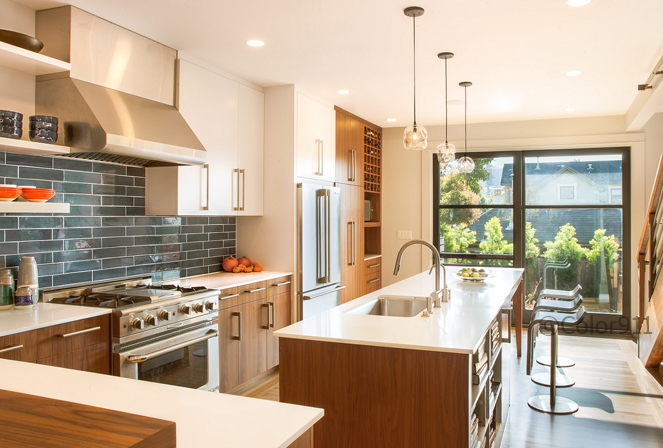
Remember when the only source of electric light at night were incandescent bulbs? That is clearly not the case anymore. There are lots of choices today, and for the sake of choosing the right colors for your space, it’s important to know some of the key factors behind how lighting affects indoor paint color.
The color of every object we see is affected by the light that surrounds it — how warm it is, how dim it is, how far away it is from the object. So the color palettes we choose to use in our home, never stand on their own. The proper lighting can sometimes be just as important, or depending on the space — even more important — than the paint colors themselves.
Daylight color has its own qualities and there is so much to say, it could be a post all its own. By and large, daylight will generally appear more balanced in the morning, but by the late afternoon, everything we see is bathed in a warm glow. How natural lighting relates to artificial lighting, enables you to take control over the appearance of your colors, determining how lighting affects paint color in a way that can be fun, warm, cool — however you want — depending on the light bulb you choose.
And remember, too, that light bulbs mimic natural light. I’ve found that depending on the time of day, natural light will have different impacts on colors within a room — truer mid-day and warmer as the afternoon goes on. So, depending on what kind of feeling you want in the room, your lighting should complement that.
The good news is that it is federal policy for companies to disclose certain facts about light bulbs when they’re on the shelf, allowing us to be more informed consumers.
Here are a few key factors to keep in mind when choosing your bulbs.
As for yourself, try experimenting with different light bulbs in different rooms and atmospheres with different colors to feel the variety of warmth and coolness in the light sources. See what types of bulbs and the level of lumens and kelvin you feel comfortable with depending on your design. And if you’re having a hard time, be sure to find yourself a color expert who can help you partner the right light with the right colors.
Lighting is so important to your design! Knowing how lighting affects indoor paint color will be critical when you go to choose your next colors. One might say it’s a bright idea to test all of this out. When it comes to lighting, seeing is believing, that’s for sure!
Looking to change things up in your home without making huge renovations? Set up an online paint color consultation with me to learn how a few color swaps can completely change your home’s look!